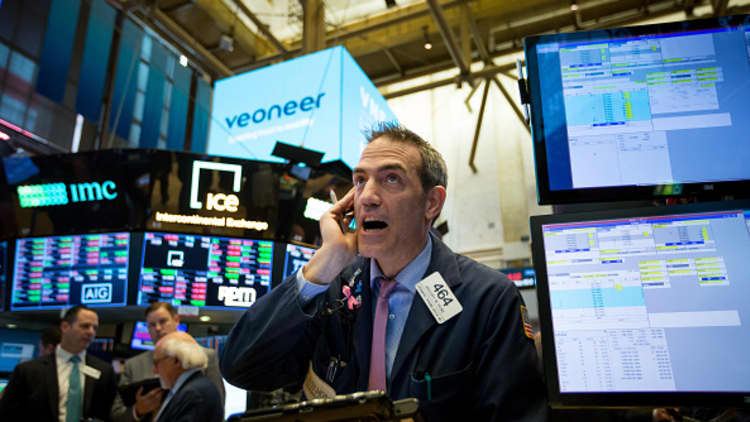
The S&P 500 and Nasdaq Composite rose slightly on Monday, snapping a four-day losing streak, as tech shares tried to regain some of the steep losses from last week.
The broad gained 0.2 percent to 2,877.13, led by utilities and industrials, while tech shares rose 0.3 percent. The tech-heavy Nasdaq climbed 0.3 percent to close at 7,924.16 as Facebook shares rose 0.7 percent and Microsoft gained 1 percent. The Dow Jones Industrial Average slipped 59.47 points to close at 25,857.07, however, as Apple lost more than 1 percent. Transports, meanwhile, rallied 1.8 percent to an all-time high.
Tesla shares rose 8.5 percent after an analyst at Baird said investors should buy them "even with drama." The analyst cited the potential of Tesla's "Gigafactory" to give the company a competitive advantage long-term.
Technology stocks dropped nearly 3 percent last week as investors grappled with the possibility of stronger regulation for social media companies.
The Justice Department said last week Attorney General Jeff Sessions will meet with state attorneys general later in September to discuss worries surrounding tech companies that "may be hurting competition and intentionally stifling the free exchange of ideas on their platforms."
Semiconductor stocks rose, cutting losses from last week. The VanEck Vectors Semiconductor ETF (SMH) dropped 2.9 percent last week. The fund rose 1 percent on Monday, led by a 9.2 percent gain in Advanced Micro Devices and a 3.5 percent jump in Broadcom.
"Selling pressure has been exacerbated by the concentration of high momentum technology stocks in a multitude of exchanges traded funds," said Marc Chaikin, CEO of Chaikin Analytics, in a note. "Once the sell orders come in from trend followers, these ETFs must sell all the stocks in the basket, regardless of fundamentals or liquidity."
Chaikin also said, however, these pullbacks are buying opportunities for investors. "While it is true that trees don't grow to the sky, most of the leaders in the tech sector such as Adobe (ADBE), Apple (AAPL), Amazon (AMZN), Alphabet (GOOGL), Salesforce.com (CRM) and Visa (V) are in the midst of a robust revenue and earnings surge."
Regardless, Amazon and Apple both fell. Amazon declined 0.7 percent, posting its four-day losing streak since December 2017. Apple dropped 1.3 percent after President Donald Trump pressured the company to make its products in the U.S.
Worries around global trade also remain. Canada and the U.S. have yet to secure a final deal that would replace the North American Free Trade Agreement (NAFTA). Trump also told reporters last week the U.S. and Japan had begun talks over trade.
Trump also said Friday that he was "ready to go" on hitting China with an additional $267 billion worth of tariffs. The U.S. administration is already looking into finalizing plans that would inflict tariffs on $200 billion worth of Chinese goods, after a public comment period expired recently.
The Trump administration's trade policies — along with tighter monetary policy from the Federal Reserve — have pushed the dollar higher this year, causing problems for overseas economies, especially emerging markets.
The dollar is up more than 3 percent in 2018 while the iShares MSCI Emerging Markets ETF (EEM) has dropped 12 percent. Many emerging-market economies are export-based, so tighter trade conditions and a stronger dollar pressures them. EEM fell 1 percent on Monday.
But strategists at MRB Partners think the dollar's rally should lose steam in the near future. In a note, they said: "The dollar is nearing an overbought level, and both sentiment and net speculative long positions are already elevated. The good news is priced" in.
"Continued dollar strength would persist only in the circumstances of a further deterioration in global growth conditions, which we do not foresee," MRB strategists said.



